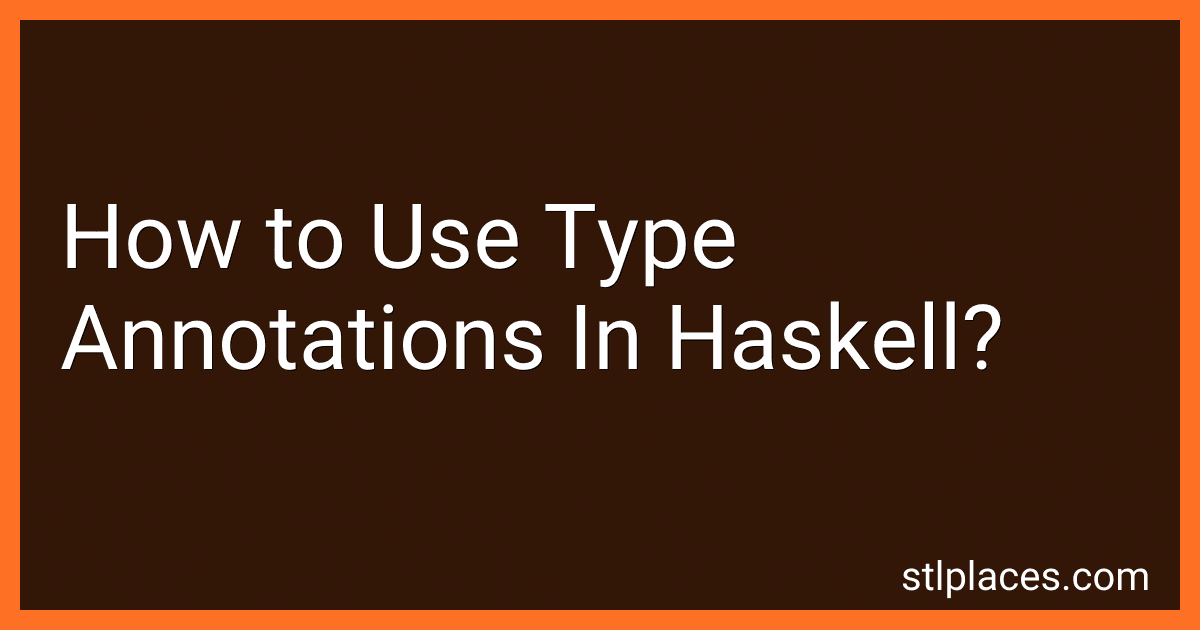Best Haskell Programming Guides to Buy in December 2025

Learn Physics with Functional Programming: A Hands-on Guide to Exploring Physics with Haskell


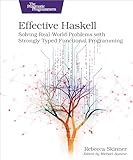
Effective Haskell: Solving Real-World Problems with Strongly Typed Functional Programming



Programming in Haskell



Learn You a Haskell for Great Good!: A Beginner's Guide
- QUALITY ASSURANCE: EVERY USED BOOK IS INSPECTED FOR GOOD CONDITION.
- AFFORDABLE PRICES: SAVE ON READING WITH BUDGET-FRIENDLY OPTIONS!
- ECO-FRIENDLY CHOICE: SUPPORT SUSTAINABILITY BY BUYING USED BOOKS.


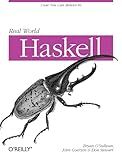
Real World Haskell
- AFFORDABLE PRICES FOR QUALITY USED BOOKS IN GOOD SHAPE.
- ECO-FRIENDLY CHOICE: REDUCE WASTE BY BUYING USED.
- DISCOVER HIDDEN GEMS: UNIQUE FINDS AT GREAT VALUE!



Get Programming with Haskell


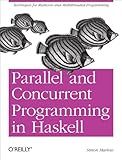
Parallel and Concurrent Programming in Haskell: Techniques for Multicore and Multithreaded Programming


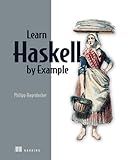
Learn Haskell by Example (Bookcamp)



Thinking Functionally with Haskell



Introduction to Computation: Haskell, Logic and Automata (Undergraduate Topics in Computer Science)


Type annotations in Haskell are used to provide explicit information about the types of variables, functions, and expressions. They are not required by the compiler, but can be specified to add clarity and aid in debugging.
To use type annotations in Haskell, the :: symbol is used to separate the name of an entity from its type. Here's a general format for type annotations:
variableName :: Type
Here, variableName is the name of the variable, and Type is the specific type that the variable should have. For example, if you have an integer variable called num, you can annotate its type as Int using the following annotation:
num :: Int
Type annotations can also be used with function definitions. For instance, consider a function called add that takes two integers and returns their sum:
add :: Int -> Int -> Int add x y = x + y
In this example, the add function has two arguments, both of type Int, and the return type is also Int. The type annotations provide a clear indication of what types the function expects and what type it produces.
Type annotations can also be used for more complex types, such as lists and tuples. For example, a list of integers can be annotated as [Int], and a tuple of two integers can be annotated as (Int, Int).
Type inference is a powerful feature of Haskell that allows the compiler to automatically deduce the types of expressions and functions in many cases. However, type annotations can be useful when the inferred type is not what you intended, or when you want to make the code more self-documenting.
In summary, type annotations in Haskell are used to explicitly specify the types of variables, functions, and expressions. They provide clarity and aid in debugging by making the expected types more explicit.
What is the impact of type annotations on Haskell compiler optimizations?
Type annotations in Haskell can have a significant impact on compiler optimizations. Here are a few ways in which they can affect optimization:
- Improved specialized code generation: Type annotations allow the compiler to generate more efficient code by specializing functions for specific types. This specialization enables the compiler to make assumptions about the types and optimize the code accordingly.
- Avoiding unnecessary runtime checks: Type annotations can help the compiler eliminate certain runtime checks, such as type equality checks or dynamic dispatch, by eliminating type ambiguities at compile-time. This can reduce overhead and improve performance.
- Inlining and code size reduction: Type annotations can assist the compiler in making more informed decisions about inlining functions. Inlining can eliminate function calls and expose additional optimization opportunities, leading to faster code execution. Additionally, type annotations can help reduce code size as the compiler can omit unnecessary runtime type representations.
- Loop optimizations: Type annotations can enable loop fusion, unrolling, and other loop optimizations by providing precise information about loop variables and expressions involved. This can lead to more efficient code execution, especially in performance-critical loops.
However, it's important to note that type annotations are not always necessary for optimization. Haskell's strong type inference system can infer types in most cases, allowing the compiler to optimize code effectively even without explicit annotations. In some cases, type annotations can also hinder optimization if they are too specific or too broad.
In summary, type annotations in Haskell play a crucial role in assisting the compiler in making optimization decisions, improving code performance, avoiding unnecessary checks, optimizing loops, and reducing code size. However, a balance must be struck as excessive or incorrect type annotations can have a detrimental effect on optimization.
How to annotate GADTs (Generalized Algebraic Data Types) in Haskell?
To annotate GADTs (Generalized Algebraic Data Types) in Haskell, you need to use the GADTs language extension.
Here's an example of how to annotate a simple GADT:
{-# LANGUAGE GADTs #-}
data Expr a where LitInt :: Int -> Expr Int LitBool :: Bool -> Expr Bool Plus :: Expr Int -> Expr Int -> Expr Int If :: Expr Bool -> Expr a -> Expr a -> Expr a
In this example, the Expr type is a GADT that represents expressions. The Expr type takes a type parameter a. Each constructor in the GADT declares the type of the value it constructs.
The LitInt constructor constructs an Expr Int value from an Int value. The LitBool constructor constructs an Expr Bool value from a Bool value. The Plus constructor constructs an Expr Int value from two Expr Int values. The If constructor constructs an Expr a value from an Expr Bool value, an Expr a value, and another Expr a value.
Note that each constructor's return type matches the type parameter a in the Expr type definition. This allows you to create GADTs that enforce type constraints on their constructors.
You can now use the Expr GADT to represent and manipulate expressions in your Haskell code.
How to annotate type variables in Haskell?
In Haskell, you can annotate type variables by using the double colon (::) operator.
The general syntax for annotating a type variable is:
variableName :: Type
Here, variableName is the name of the type variable, and Type is the specific type that you want to annotate.
For example, if you have a function that takes two arguments of type a and returns a value of type a, you can annotate the type variables as follows:
myFunction :: a -> a -> a myFunction x y = ...
In this case, a is the type variable, and a -> a -> a is the annotated type, indicating that the function takes two arguments of type a and returns a value of type a.
You can also use type classes in type annotations. For example, if you want to specify that a must be an instance of the Num type class, you can write:
myFunction :: Num a => a -> a -> a myFunction x y = ...
This annotation indicates that a must be an instance of the Num type class.
It is important to note that type annotations are optional in Haskell, as the compiler can often infer the types automatically. However, adding type annotations can be helpful for documentation, readability, and to specify more specific type constraints when necessary.
